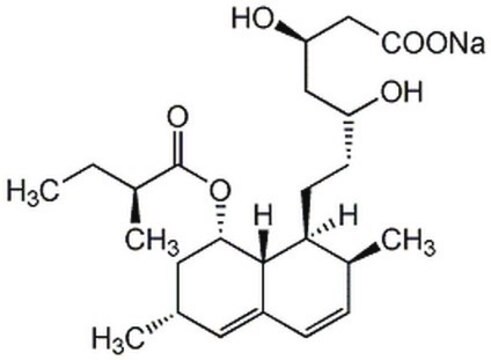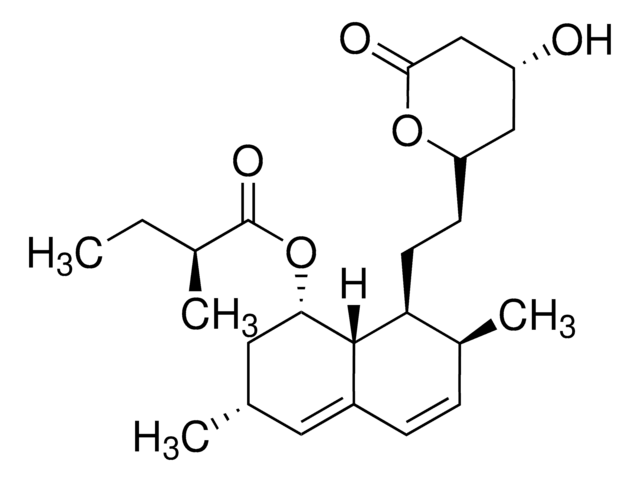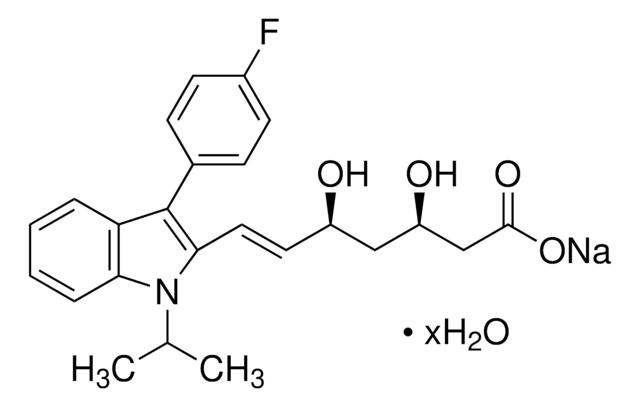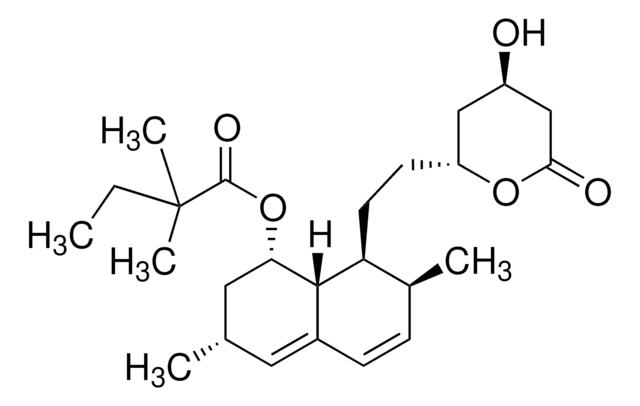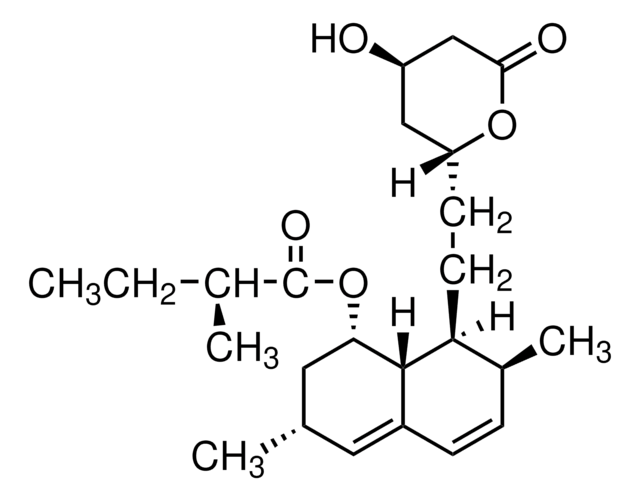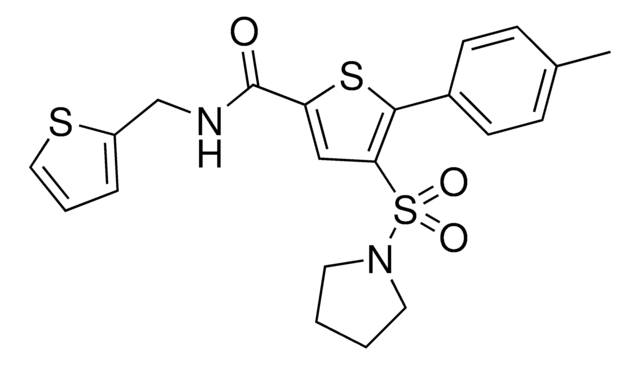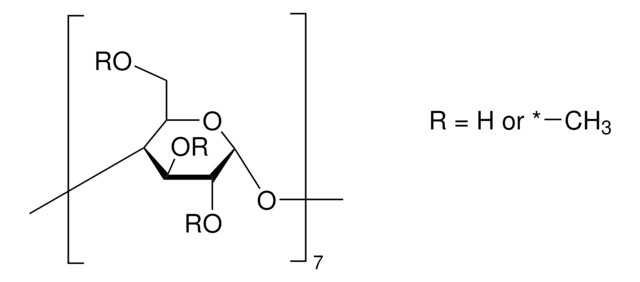438187
Lovastatin, Sodium Salt
InSolution ≥95%
Synonym(s):
InSolution Lovastatin, Sodium Salt
Sign Into View Organizational & Contract Pricing
All Photos(1)
About This Item
Empirical Formula (Hill Notation):
C24H37O6 · Na
Molecular Weight:
444.54
UNSPSC Code:
51111800
NACRES:
NA.77
Recommended Products
Quality Level
Assay
≥95% (HPLC)
form
liquid
manufacturer/tradename
Calbiochem®
storage condition
OK to freeze
avoid repeated freeze/thaw cycles
protect from light
shipped in
dry ice
storage temp.
−70°C
General description
Carboxylate form of Lovastatin (Cat. No. 438185) that is active in whole cells and cell-free assays. Lovastatin is reported to be an anti-hypercholesterolemic agent that acts as a reversible competitive inhibitor of 3-hydroxy-3-methylglutaryl coenzyme A (HMG-CoA) reductase and blocks a series of biological events including activation of p21ras by insulin in 3T3-L1 fibroblasts and 3T3-L1 adipocytes, farnesylation of p21ras, which decreases the pool of intracellular Ras available for subsequent activation by growth factors (including insulin), and N-ras-induced neuronal differentiation. Causes cell cycle arrest in the late G1 phase. Shown to inhibit the stimulation of MAP kinase by insulin in HIRcB cells and block the transcription of the type-I SCR gene in THP-1-derived macrophages. Also blocks PDGF receptor tyrosine phosphorylation and MAP kinase activation by PDGF.
Biochem/physiol Actions
Cell permeable: yes
Primary Target
HMG-CoA reductase
HMG-CoA reductase
Reversible: yes
Packaging
Packaged under inert gas
Warning
Toxicity: Harmful (C)
Physical form
A 10 mM (5 mg/1.13 ml) solution of Lovastatin, Sodium Salt (Cat. No. 438186) in H₂O.
Reconstitution
Following initial thaw, aliquot and freeze (-70°C). Aliquots are stable for up to 6 months at -70°C.
Other Notes
Rao, S., et al. 1999. Proc. Natl. Acad. Sci. USA96, 7197.
Carel, K., et al. 1996. J. Biol. Chem.271, 30625.
McGuire, T.F., et al. 1996. J. Biol. Chem.271, 27402.
Umetani, N., et al. 1996. Biochim. Biophys. Acta1303, 199.
Xu, X.Q., et al. 1996. Arch. Biochem. Biophys.326, 233.
Reusch, J.E.-B., et al. 1995. J. Biol. Chem.270, 2036.
Carel, K., et al. 1996. J. Biol. Chem.271, 30625.
McGuire, T.F., et al. 1996. J. Biol. Chem.271, 27402.
Umetani, N., et al. 1996. Biochim. Biophys. Acta1303, 199.
Xu, X.Q., et al. 1996. Arch. Biochem. Biophys.326, 233.
Reusch, J.E.-B., et al. 1995. J. Biol. Chem.270, 2036.
Legal Information
CALBIOCHEM is a registered trademark of Merck KGaA, Darmstadt, Germany
Storage Class Code
12 - Non Combustible Liquids
WGK
nwg
Flash Point(F)
Not applicable
Flash Point(C)
Not applicable
Certificates of Analysis (COA)
Search for Certificates of Analysis (COA) by entering the products Lot/Batch Number. Lot and Batch Numbers can be found on a product’s label following the words ‘Lot’ or ‘Batch’.
Already Own This Product?
Find documentation for the products that you have recently purchased in the Document Library.
Patrícia M R Pereira et al.
Clinical cancer research : an official journal of the American Association for Cancer Research, 26(23), 6215-6229 (2020-10-02)
Statins are cholesterol-depleting drugs used to treat patients with hypercholesterolemia. Preclinically, statins disrupt trafficking of receptors present at the cell membrane. Membrane receptors, defined as tumor biomarkers and therapeutic targets, are often internalized by an endocytic pathway. Indeed, receptor endocytosis
Our team of scientists has experience in all areas of research including Life Science, Material Science, Chemical Synthesis, Chromatography, Analytical and many others.
Contact Technical Service
